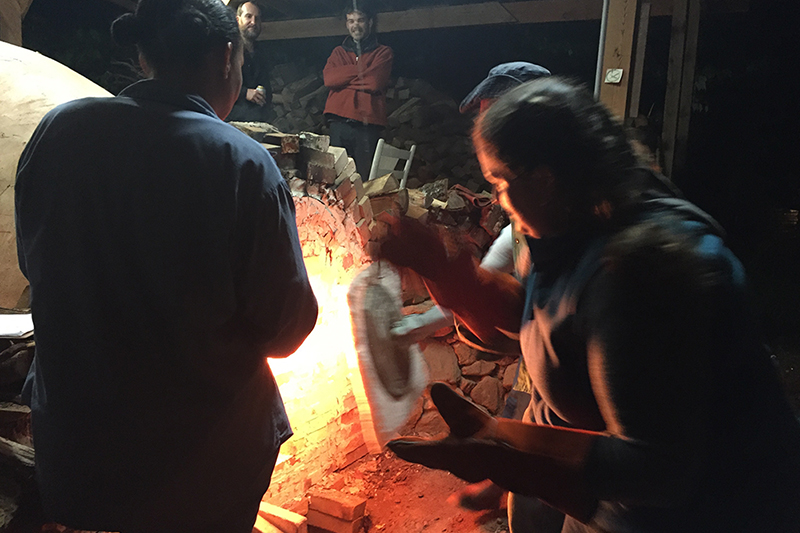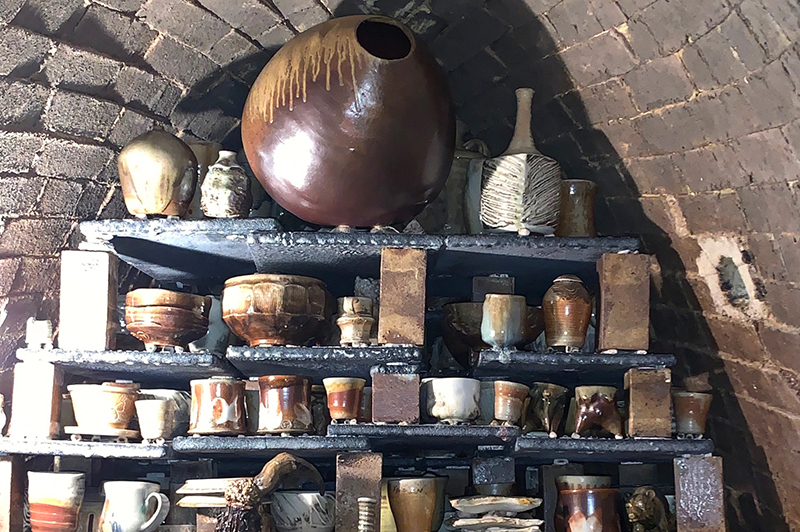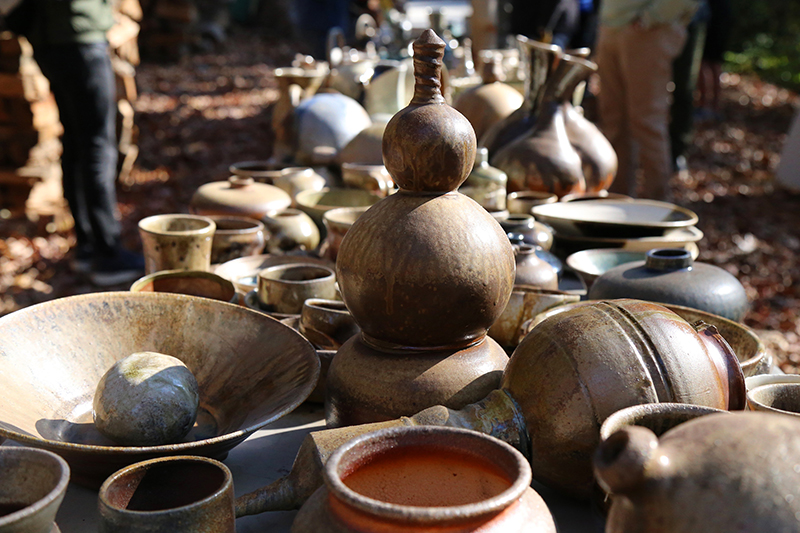Anagama Kiln
The Hambidge anagama kiln was built in the early 1990s by Ben Owen III, a third generation Seagrove, North Carolina potter. It incorporates design elements of both a traditional Japanese anagama and a traditional southern groundhog kiln. The coming together of these seemingly distinct pottery traditions has played a part in the nicknaming of the kiln as the “Confluence Kiln” (gouryuugama in Japanese).
The kiln acts as the focal point for the coming together of diverse styles of pottery and sculpture, as well as the coming together of an ever-widening group of potters from throughout the southeast and across the country. With the beautiful grounds of the Hambidge Center as the background, the kiln provides a great opportunity for community building among clay artists while at the same time giving first-hand experience of the marvels of the wood firing process. The firing of the kiln over a three-day weekend provides potters with the unique opportunity to experience all facets of a wood firing.
Hambidge firings are scheduled twice a year and allow for 20-25 participant potters. The event is open to anyone who wants to learn more and see the kiln in action.
Interest in our anagama firings is high, so participation is determined in advance by a lottery. Click here to see when the next firing will be, sign up for the lottery, and view frequently asked questions.
Note: This event is open to the public. If you simply want to attend in order to watch and learn, you may do so for free, but you must arrange your visit in advance with Rachel Dimenichi at rdimenichi@hambidge.org or 706-746-7324.
More about the anagama technique…
The process begins at about 9:00am on Friday morning when people start arriving and glazing pots. As the pots are glazed, the loading begins at about 11:00am and lasts until about 6:00pm. The kiln holds between 300 and 400 pots depending on the sizes. The back of the kiln is loaded with glazes that mature at about 2250 degrees and won’t require much ash. Each pot is placed on three wads of a clay-like mixture that will prevent the pots from sticking to the shelves due to ash buildup or glaze runs. The pots loaded in the front of the kiln will be exposed to the greatest amount of flame and ash. These pots can exceed 2380 degrees in temperature. The very front of the kiln is considered the “high risk – high reward” area of the kiln, because these pots will show the greatest effects from the fire, but also have the chance of warping or having the glazes run too much. This is the area of the kiln with the greatest buildup of ash as well.
At about 6:00pm the door is bricked up leaving an opening so wood can be thrown into the firebox. We begin the lighting process by having a reading and thanking everyone for coming to the firing. It is a good community building part of the weekend and allows us to share some thoughts about the tradition of wood firing. A propane burner is used for about two hours to dry the kiln out and begin the slow rise in temperature. Wood is introduced into the kiln at about 9:00pm and will be added every 5-10 minutes until the firing is complete sometime Sunday morning, usually around 8:00am. At the end of the firing, the kiln is sealed and allowed to cool for the entire week. Even after a full week, there is some residual heat in the kiln. The amount of wood used for each firing varies greatly depending on the type of wood, the age of the wood, and the weather conditions. We use anywhere from 1½ to 2 cords of wood per firing.
The anagama process is different from other firing processes in the variability produced by the kiln. As the flame and wood ash move through the kiln they produce an amazing number of variables on each pot. Each pot tells a story of its place in the kiln and the story of the firing. Pots have a very definite front and back when they come out of an anagama. As much as we try and control the variables, the firings are always different and produce results we could not have imagined. An anagama firing walks a fine line between chaos and control, and the pots have a much more organic feel when they are fired in an anagama. The diversity of results that comes from these firings is what wood firing potters prize in their pots.






